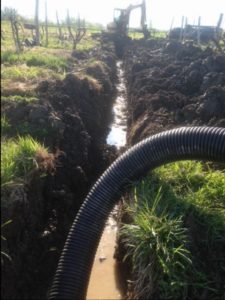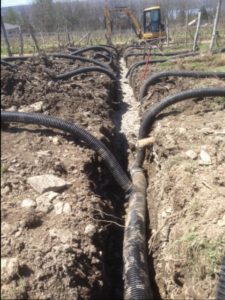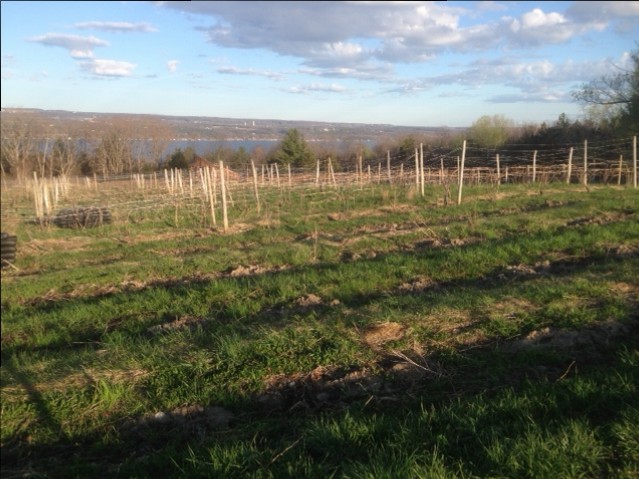Vineyard Renovations 2015 (part 4)
Since acquiring Silver Thread in 2011, we have been steadily renovating and improving the 30-plus-year-old vineyard. We have a superior vineyard site within the Finger Lakes on the warm and protected eastern shore of Seneca Lake, with low-vigor shale soils. The vineyard also came planted with a good mix of European varieties–Riesling, Chardonnay, Pinot Noir, Gewurztraminer, Cabernet Franc and Cabernet Sauvignon.
The vineyard, however, has challenges that we have been addressing ever since taking over. The first year, we retrained the vines from pendelbogen to flat cane (VSP) in order to fill out the canopy and increase sun exposure for better grape quality. The second year, we replanted 10% of the existing vineyard to fill empty spaces. In 2014, we added 7 new rows of vines to fill in areas that had been cleared but never planted. New plantings included Riesling and Merlot.
This year, we are embarking on the fourth and final (for now) phase of renovation. In June, we will be adding 6 new rows of Cabernet Franc and Riesling to the lower vineyard (closest to the lake). We are also replacing 5 rows of Chardonnay that are affected with leaf-roll virus with Riesling. It’s heart-breaking to take out the 33-year-old Chardonnay because it was part of the original planting at Silver Thread. But the virus significantly slowed fruit ripening in the affected vines and was spreading to other areas of the vineyard. The only cure for virus in grape vines is to replant with uninfected vines. (Don’t worry, Chardonnay lovers–we still have another block of Chardonnay vines that remain untouched!)
After ripping out the Chardonnay but before planting the baby Riesling, we are addressing a long-standing drainage problem in the vineyard. Our site has been under vine since the late 1800s (with Catawba grapes prior to its current state). Drainage was rudimentary to non-existent in those days and the clay tiles used are notorious for breaking up and getting clogged over time. After a rain storm, we have standing water for days in this area and there is a “dead zone” where no vines can grow due to the perpetual wetness. We have been digging trenches and burying perforated pipes surrounded by round stones (so the perforations won’t get clogged with dirt) to carry water away from this spot. The pipes drain into our pond. It’s fascinating to watch–here are some photos of the project.

A trench was dug using an excavator to remove old drain tile and insert a new pipe. Water in the trench shows the water problem.

The drainage pipe is surrounded by round stones. Lateral pipes will also be buried to feed into the main pipe.



